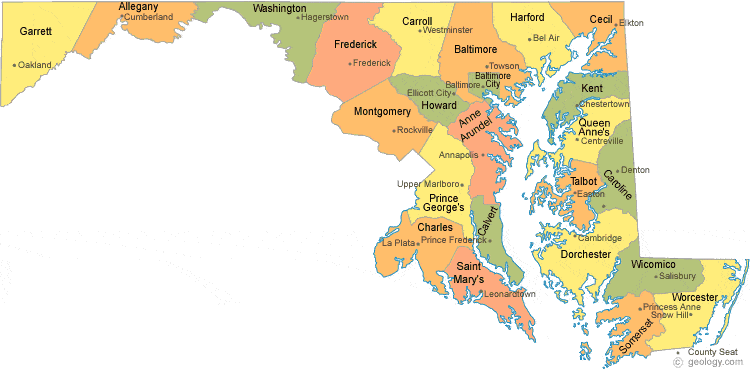
Get Informed - Maryland Government Overview
Maryland Government Overview
The Maryland government structure is framed by a constitution.
Like the federal government, Maryland has an executive branch (the Governor), a legislative branch (the General Assembly), and a judicial branch.
Maryland has a very well-organized government website. We highly recommend that you explore that site and see all it has to offer. A great place to start is the government overview page.
We are primarily concerned with and will focus on the Maryland Legislature, as that is the body that must pass our resolution. We also encourage everyone to improve their understanding of all branches of their state and local governments.
Maryland Constitution
Like many other state constitutions, the Maryland Constitution is modeled after the U.S. Constitution. It has a preamble, a declaration of rights, and it frames the structure of the government.
It was ratified in 1867. There were three previous constitutions (1776, 1851, 1864). It has been amended around 200 times and is much longer than most other state constitutions.
The General Assembly may propose amendments to the Maryland Constitution and these must be ratified by voters during the general election.
The Governor cannot veto a constitutional amendment.
Did you know? Every 20 years, as part of the general election, Maryland voters must decide whether to call a constitutional convention for the drafting of a new state constitution.
Maryland General Assembly
The General Assembly is Maryland's legislative body and directly represents the electorate.
Each district has one senator and three delegates.
The state has 47 districts represented by 47 Senators and 141 Delegates.
In most districts, the three delegates are elected at large from the whole district via block voting.
-
In some more sparsely populated areas of the state, the districts are divided into sub-districts for the election of delegates either into:
-
Three one-delegate sub-districts or
-
One two-delegate sub-district and one one-delegate sub-district.
-
All senators and delegates serve four year terms that run concurrently. These terms are also concurrent with the Governor's term.
Elections last took place in 2018 and will take place again in 2022.
For information on who represents you and how to contact them, check out our Mayland Legislators Page.
Legislative Session - The Legislature meets in regular session for 90 calendar days each year, beginning on the second Wednesday in January.
Re-districting - Article III, Section 5 of the Maryland Constitution requires the Governor to prepare a legislative districting plan following the decennial census, which will next occur in 2020.
The districts must be drawn with roughly equal populations and that is the primary reason for redistricting after the census.
This Redistricting Booklet has a great overview of the process and the State and Federal requirements in Maryland.
More to Explore
Maryland Constitution
Georgetown Law Library has some great information on the history of constitutional conventions in Maryland.
Remarkable Evolution: The Early Constitutional History of Maryland - This article tells the story of the evolution of Maryland's Constitution from 1632 to 1851. That story includes a number of developments important to American constitutional history.
Archives of Maryland Constitutional Convention Records
The Maryland Constitution on Ballotpedia
The Maryland Constitution on Maryland Manual On-Line
Maryland Legislature
Maryland Constitution, Article III: Legislative Department
General Assembly of Maryland Website
General Assembly of Maryland - Reapportionment and Redistricting Website
Maryland Redistricting Booklet
For information on how a bill or a resolution gets passed, check out the next section of our Maryland Government Overview >>> Legislative Process



